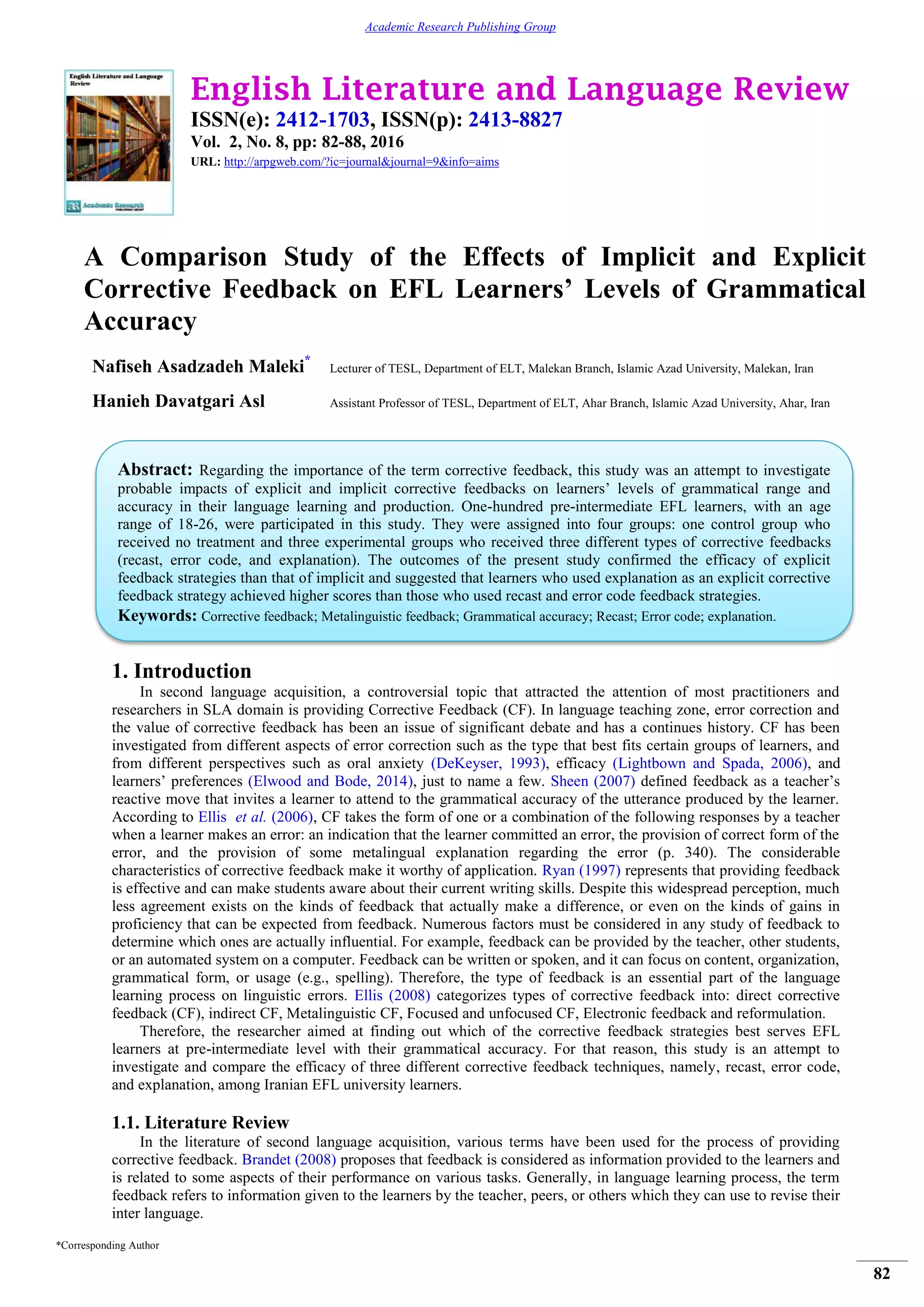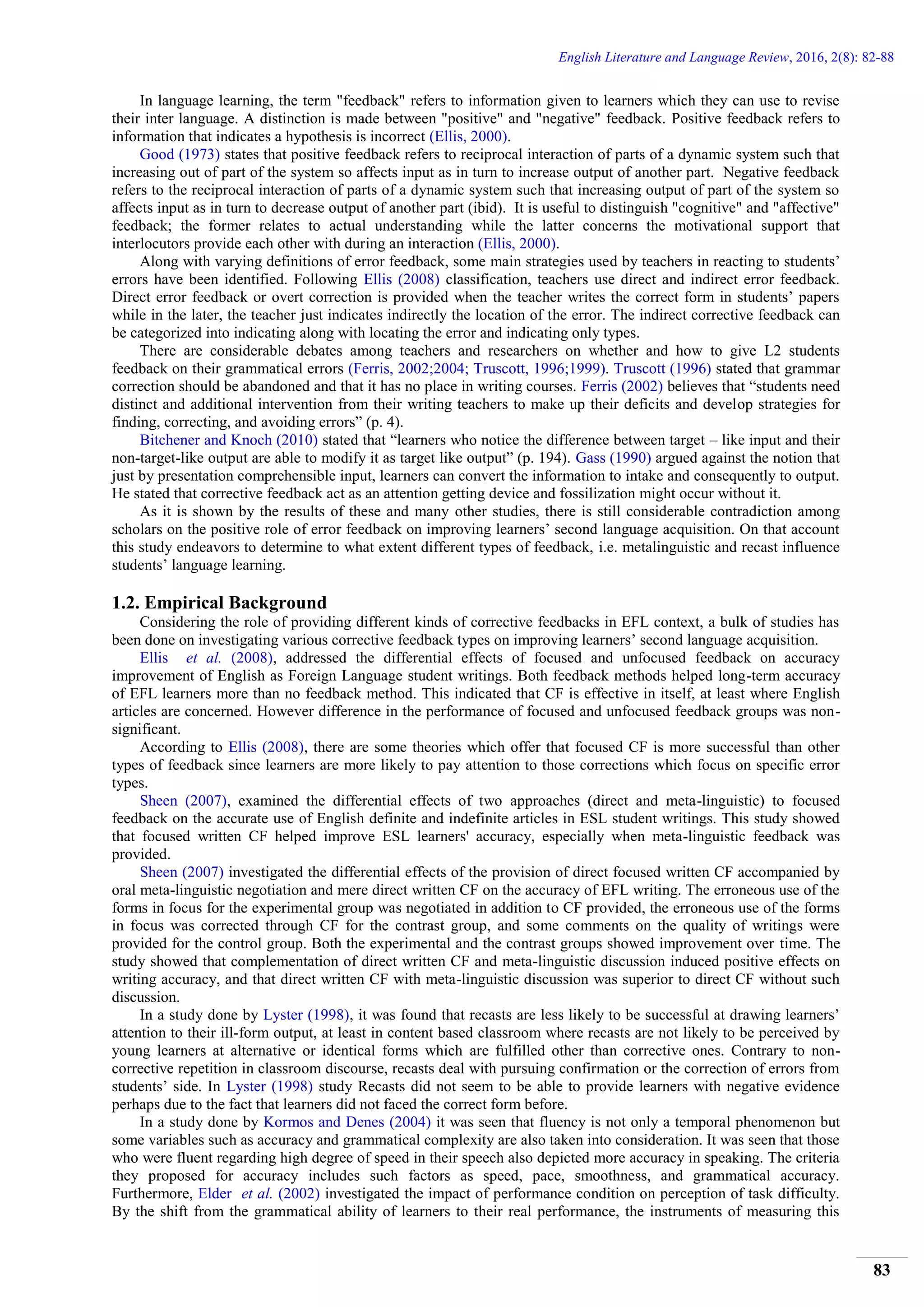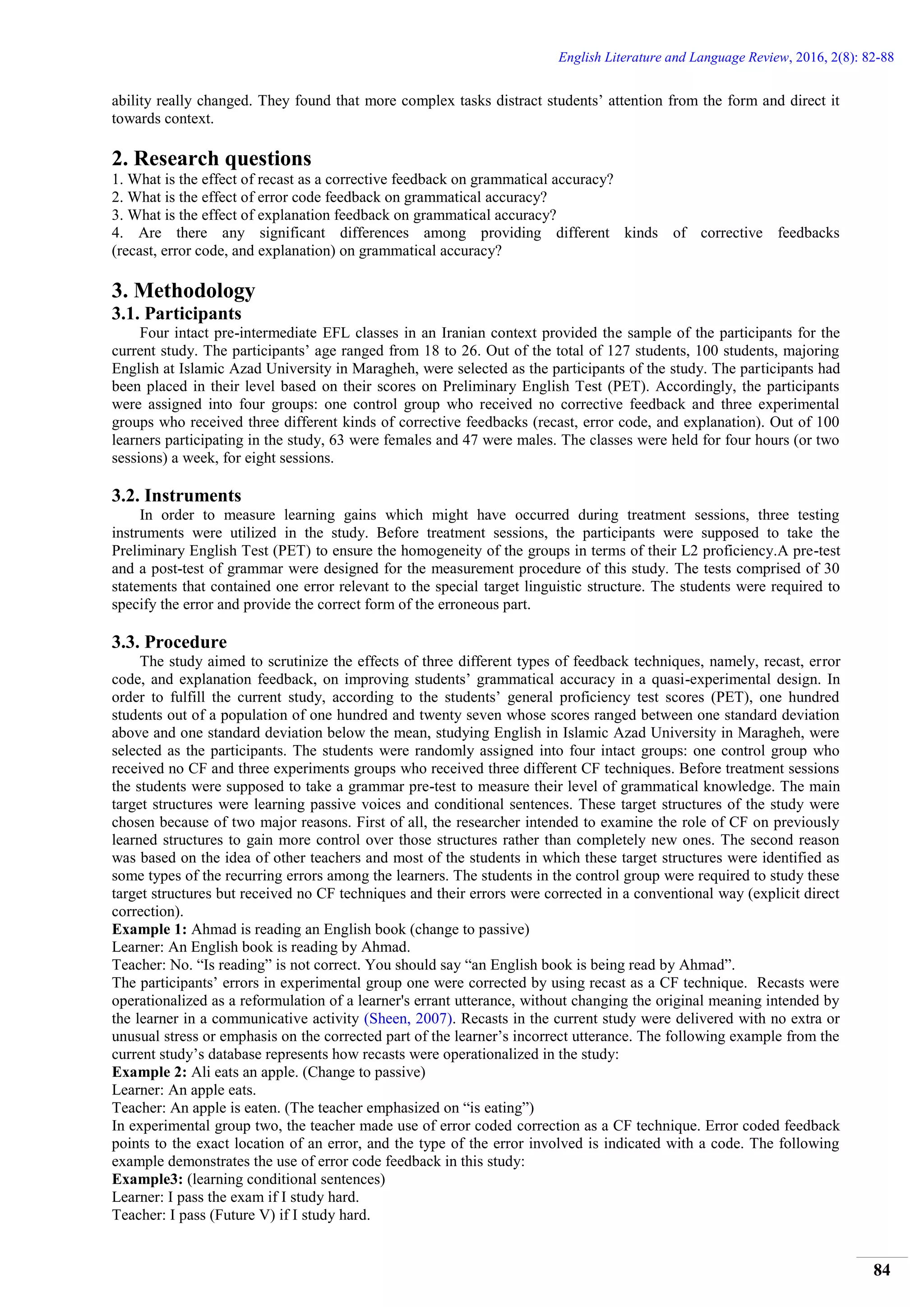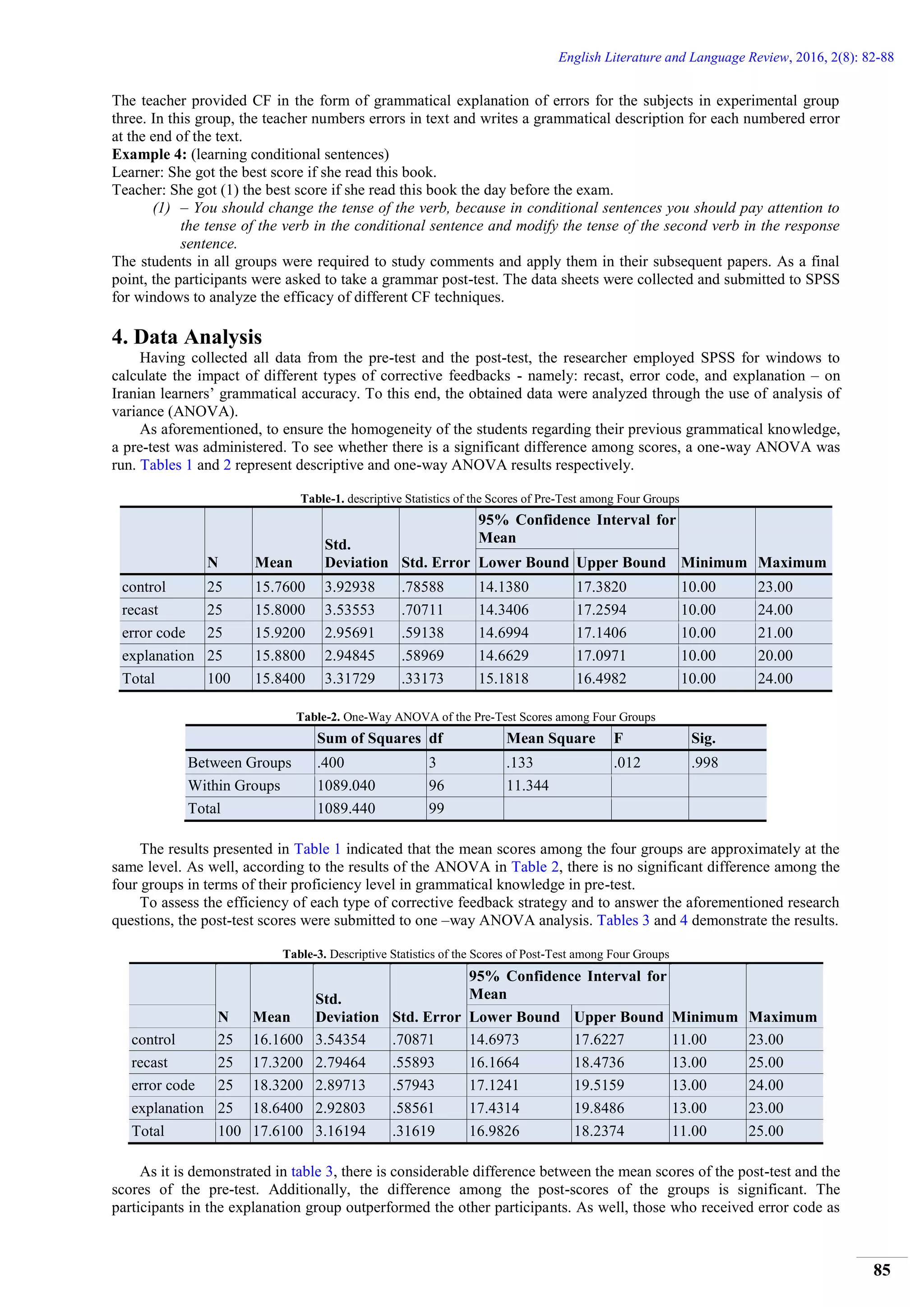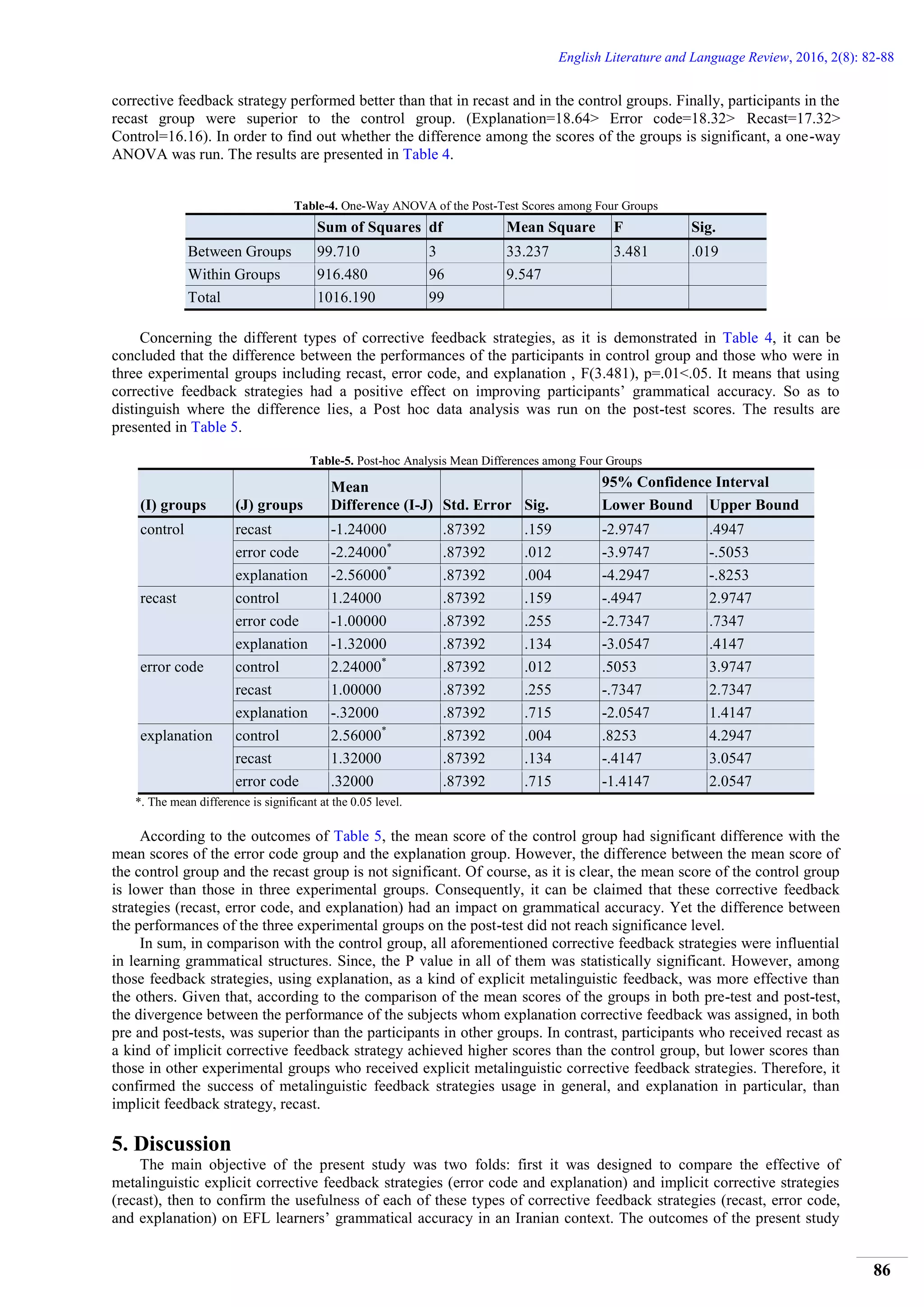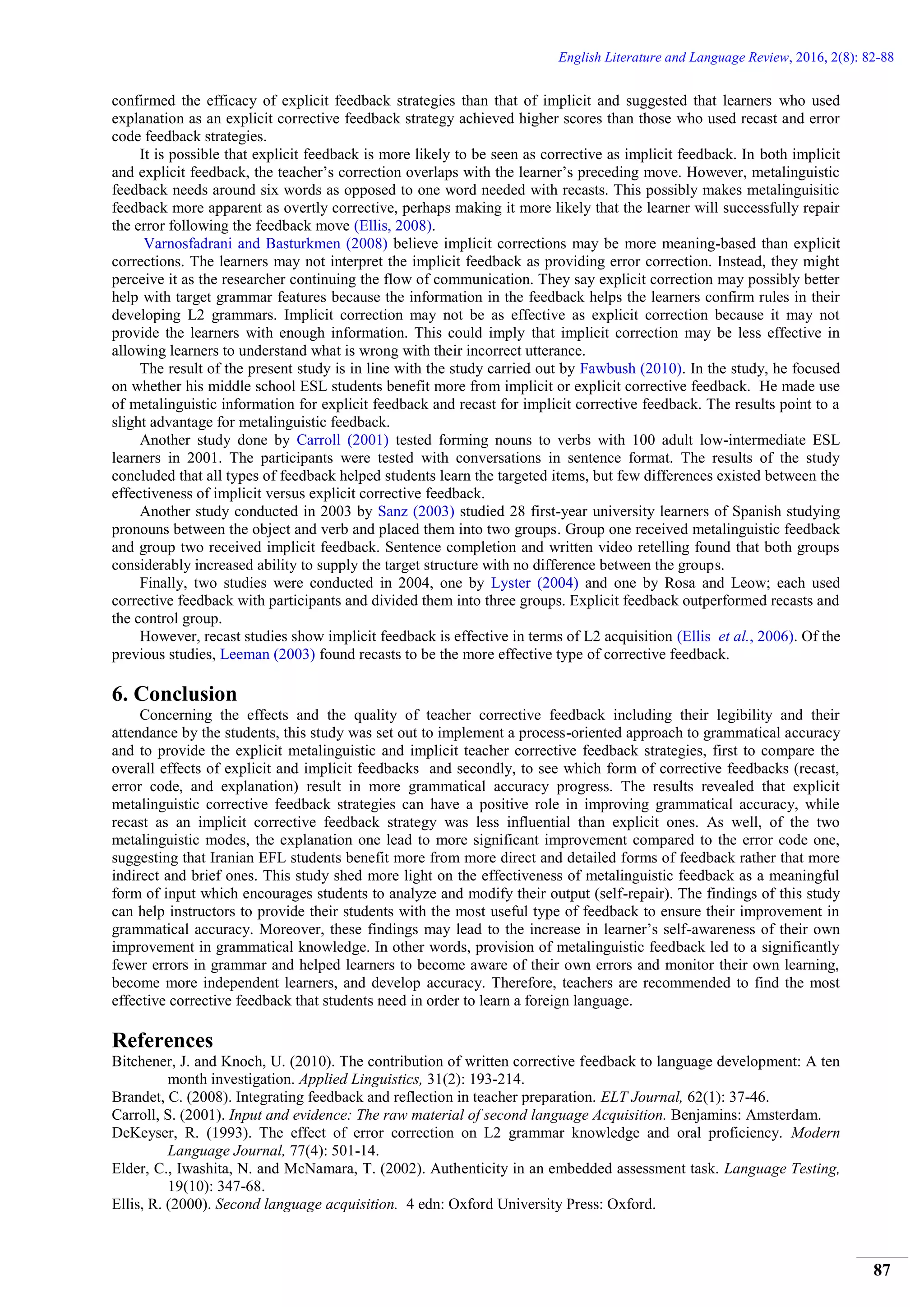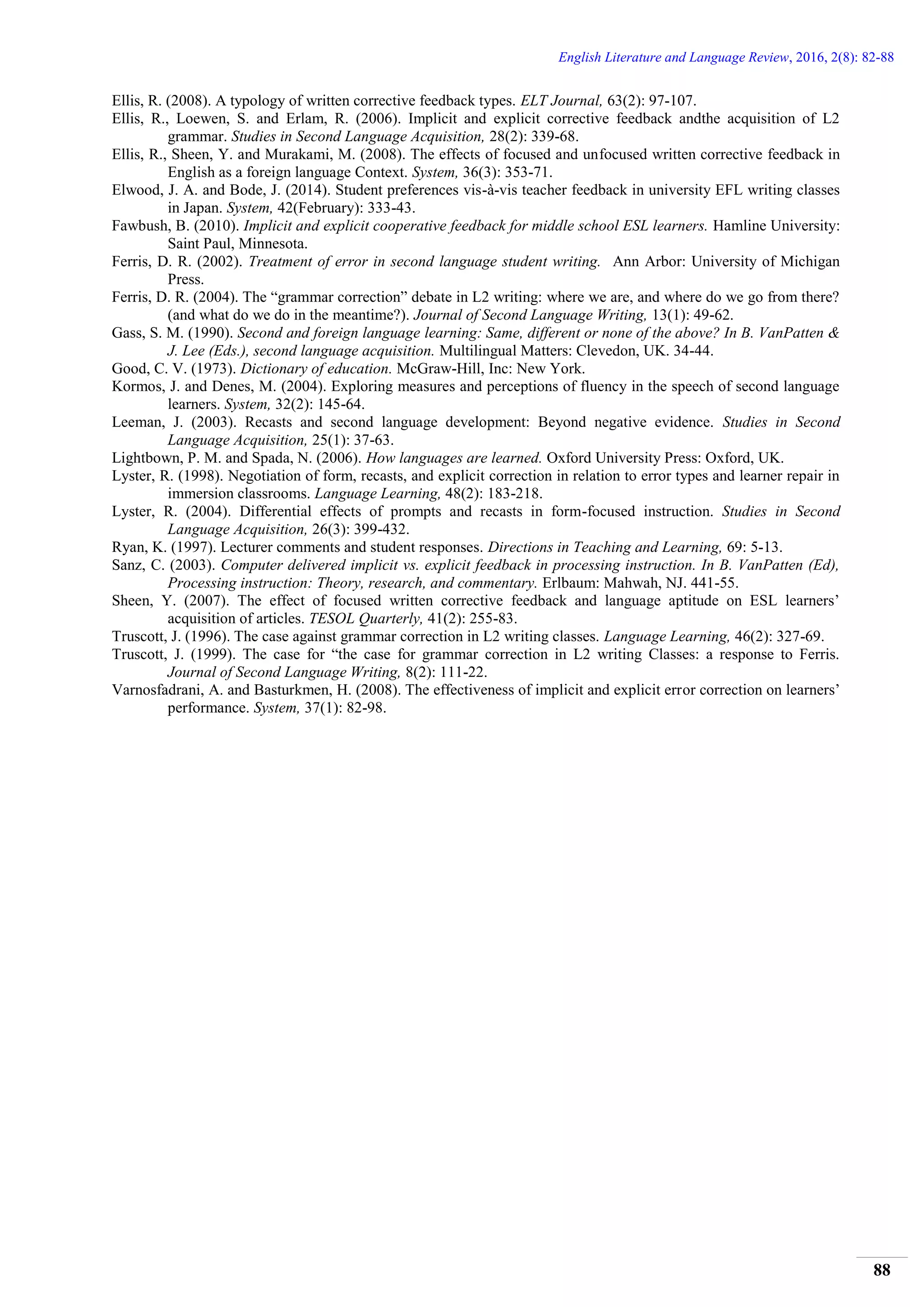This study investigates the effects of explicit and implicit corrective feedback strategies on the grammatical accuracy of pre-intermediate EFL learners. A total of 100 participants were randomly assigned to receive recast, error code, explanation feedback, or no treatment at all. Results indicated that explicit feedback, particularly through explanation, led to higher levels of grammatical accuracy compared to implicit methods.
